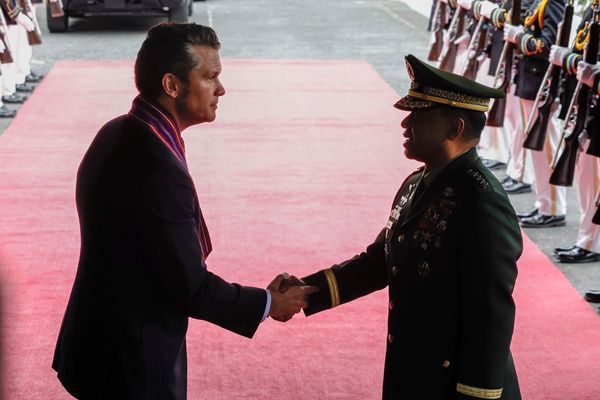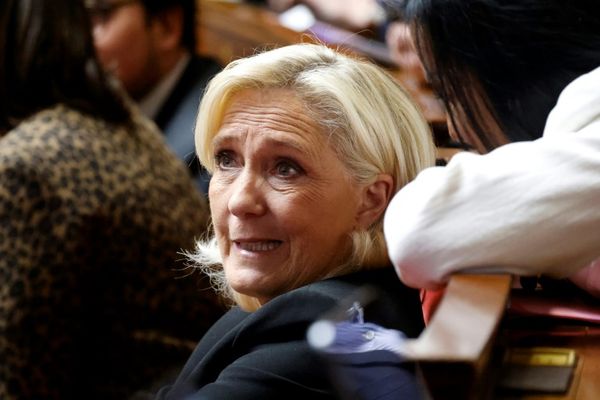
More than 10,000 people serving in the armed forces are “not medically deployable”, according to figures from the Ministry of Defence .
The defence minister, Alistair Carns, revealed in a written parliamentary question that throughout the military, 99,560 service members are medically fully deployable, with 14,350 having limited deployability and 13,522 medically not deployable.
The Royal Navy has 2,922 members who are medically undeployable, the army has 6,879 and the Royal Air Force 3,721.
An MoD spokesperson said: “The vast majority of our service personnel – around 90% – are deployable at any point, with most of the remaining members of our armed forces employed in wider military roles.
“We are committed to providing world-class medical treatment to ensure personnel can return to duty where possible or to support their transition to civilian life.”
Those serving in the armed forces who have medical conditions or fitness problems that affect their ability to do their work are typically signposted to a medical board for an examination and review of their medical grading.
Personnel may be downgraded to allow for treatment, recovery and rehabilitation, and deployability status can be awarded on a temporary or permanent basis. Deployable in this context means one who is able to deploy in operation. Some service people may have medical requirements that restrict the type or location of operation they can be deployed on.
MoD statistics from April 2024 showed the army had come short of its target size for the first time since it was set. All three service branches are now below target: the army by 1%, the Royal Navy and Royal Marines by 5%, and the RAF by 10%. Overall, the UK army is 5,440 personnel (1%) below the target.
The former defence minister James Heappey told Times Radio the figures were “very arresting” and a matter of concern. But he said the figures would include many people deemed unfit because they had missed dental checks, and that others with injuries could be deployed in a war.
He said: “I’ll bet you that a big chunk of the non-deployable, medically downgraded people are downgraded for dental reasons.
“And what that tends to mean is that they’ve not had a dental checkup in the last six months, and so they are automatically declared dentally unfit, and therefore not fully deployable.”
He added: “There is a reality about the nature of some of these injuries that mean that they couldn’t deploy to go on a discretionary operation today in peacetime, but if war was to come, then they would be absolutely able to go and fight because the needs of the nation would rather trump that rather discretionary take on their medical capacity.”
There has been speculation that the UK could be considering sending troops to Ukraine to help train its armed forces after Keir Starmer had a call with Ukraine’s president, Volodymyr Zelenskyy.
Last week the defence secretary, John Healey, said it was a “critical period” for Ukraine and promised the UK would be “stepping up” its help.
Russia, Iran and China have increased their defence budgets by more than 50% on average since 2014, with the UK’s defence spending growing at just 14% over the same period.
House of Commons research commissioned by the Liberal Democrats suggested that Russia, Iran and China had boosted defence spending by 34%, 57% and 60% respectively since 2014.
Helen Maguire, the Lib Dem defence spokesperson, said that with “an unreliable partner elected across the Atlantic, it is vitally important for Britain’s defences to be strengthened”.
Funding for the army has plunged by £500m in real terms over the past five years. MoD spending on service personnel is predicted to reach about £11.66bn in 2024-25, a fall of about 4% when adjusted for inflation.
In the autumn the prime minister committed to increasing the defence budget by £2.9bn for next year.
An MoD spokesperson said: “The vast majority of this spending was under the previous government and, as the figures show, spending is due to increase next financial year.
“Additionally, the budget increased defence spending by £2.9bn for next year and we are committed to setting a path to 2.5% of GDP on defence in the spring.
“Our service personnel make extraordinary sacrifices to keep us all safe, and we are proud of their courage, dedication and professionalism. This is why we are renewing the nation’s contract with those who serve – investing in our people, giving them the largest pay rise in decades, investing in military homes, and offering retention payments for key skills within the armed forces.”







